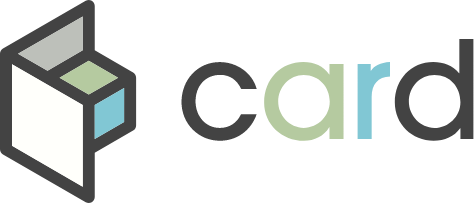What is Markerless Augmented Reality?
Augmented Reality (AR) is one of the more easily accessible forms of extended reality (XR). Like Virtual Reality (VR), AR has seen a rise in popularity and application in recent years with further predicted growth in the years to come. While AR may seem like one singular form of XR technology, there are different versions of augmented reality, the most preferred now being markerless augmented reality.
Markerless Augmented Reality refers to AR software that doesn’t require data about a user’s environment to properly overlay virtual content into the scene. Markerless AR can be used in any space as long as there’s a flat surface available for display.
Read on to learn more about markerless augmented reality, its applications, its future, and why many creators prefer it to marker-based augmented reality.
What is Markerless Augmented Reality?
Markerless Augmented Reality refers to AR software that doesn’t require data about a user’s environment to properly overlay virtual content into the scene.
This means that Markerless AR can be used in any space. This is the most common form of AR used in today’s market. A great example of this is Pokémon Go or IKEA Place.
The opposite of markerless augmented reality is marker-based augmented reality. This is when a marker is used to trigger augmented reality features via an AR app. AR markers can come in many forms such as images, objects, print media, and more. The markers are usually laid on a flat surface to allow for easier reading.
Here’s an example of marker-based AR at work:
How Does Markerless Augmented Reality Work?
Markerless augmented reality works by combining digital data with information from the real world in real time. It uses a combination of software, video graphics, and audio, with a headset’s or smartphone’s cameras, gyroscope, location services, haptic sensors, and accelerometer to place 3D graphics in the real world.
Given that Markerless AR doesn’t have any prior knowledge of a scene, it detects objects or particular parts of the scene, such as floors or walls, and places the 3D objects there. It works best with a type of patterned environment, rather than porcelain tiles or a plain white wall.
Initially, the first markerless AR systems utilized a device’s location services and hardware to determine its orientation in space before projecting the scene. However, with the development of simultaneous localization and mapping technology (SLAM), the accuracy of markerless AR image analysis has seen significant improvement.
SLAM markerless image tracking works by scanning the environment and then creating maps of where to input virtual 3D objects. These objects are stationary until you move them. So even if the objects are not within your field of vision (FOV) they, do not move. This means you don’t have to rescan the area each time you move.
Types of Markerless Augmented Reality
There are four types of markerless augmented reality technologies.
Location-Based AR
This type of markerless augmented reality allows for the projection of 3D virtual objects into the real world based on information in their surrounding location. As mentioned before, this works using the location and sensors of your smart device to place the virtual objects in the desired location.
The virtual image is linked to a specific location and can be accessed by your device by reading the data using its camera, compass, accelerometer, and GPS. Location-based AR is great especially for tourism and travel industries, as it adds another dimension to travelers’ and tourists’ experiences.
Projection-Based AR
This type of augmented reality is used to deliver digital data within a fixed context. This is because projection-based AR focuses on rendering virtual 3D objects within your physical space.
Due to this, you can move freely around the environment of a set area where a stationary projector and tracking camera are set. The main purpose of this type of AR is to produce illusions about the position, orientation, and depth of an object projecting artificial light onto real flat surfaces. It is also used to enhance pre-existing objects and provide another dimension to them.
Here’s a Particle Collider interactive projection created by SPACEFILLER:
Overlay AR
This type of AR is used to change the original view of an object with a more current virtual image of that object for users. Overlay AR can provide numerous views of a target object with the ability to show additional information about said object.
Here’s an example of overlay AR being used in a boiler room to provide additional information about the system:
Contour-based AR
Contour-based AR is done through the use of special cameras is used to outline specific objects with lines to handle certain situations. An example of this would be using it for car navigation systems to ensure safe driving during low light/visibility situations.
Google Maps AR is a great example of contour-based augmented reality:
Advantages and Disadvantages of Markerless Augmented Reality
As you can see, Markerless AR has a wide range of uses, including art, education, navigation, business, and entertainment. No-marker AR is the technology that we’ll all undoubtedly be seeing more of in the years to come.
However, no technology is perfect, and markerless augmented reality is no exception. Like its extended reality counterparts, markerless AR has its own set of pros and cons.
Advantages of Markerless AR
One of the key advantages of markerless AR applications is that you can move digital objects freely in any given physical space. This increased range of motion is because markerless augmented reality doesn’t require a marker to activate an application’s AR features. Therefore, you can place a digital object anymore and move it around or keep it fixed in one spot.
Markerless AR also doesn’t need an efficient object tracking system to function and grants a reliable AR experience. This is thanks to the advancements in cameras, sensors, processors, and other components in smartphones and tablets.
A wider field of view is also an added advantage of no-marker augmented reality. Without a marker, your AR content or environment can take up a whole room or space, and you can interact with it through your smartphone or tablet.
Disadvantages of Markerless AR
One of the key disadvantages of markerless augmented reality is that it requires a textured surface for it to work well. This can be any textured surface you can think of, once it has texture then your device will be able to recognize it and map it accordingly. Flat, blank/reflective surfaces, such as white tiles, won’t work as well.
Another disadvantage of markerless AR is that it requires devices with a lot of processing power to run it smoothly. This is why more current smartphones and tablets run AR applications smoothly, while older models simply cannot. However, as time progresses, we’ll see AR and the technology necessary for it as a standard in our everyday lives.
Markerless Augmented Reality Applications
Due to markerless augmented reality’s versatility and freedom of movement, its applications are far and wide. It can be used for business, and pleasure and be developed to bring about even more immersive and informative experiences.
While markerless AR is currently limited to smartphones and tablets on a wide scale, it’s hard not to think about its capabilities with AR headsets are produced on a massive scale. That’s when AR will really become a more integral part of our society.
Right now, markerless AR is being used in a number of industries to provide unique experiences to users. Here are a few:
Gaming
One of the most popular applications of markerless augmented reality is in the gaming industry. Pokémon Go is one of the most popular examples of this. Niantic utilized its experience, technology, and knowledge from the game Ingress, to produce Pokémon Go, and Harry Potter Wizards Unite.
There are other mobile AR games available for both Android and iOS and undoubtedly more to come as AR becomes more mainstream.
Retail/eCommerce
Another industry that’s seen the adoption of markerless augmented reality is retail, especially eCommerce. Many companies, especially online ones have adopted AR technology to allow customers to try on outfits, and even view objects in their homes.
IKEA has IKEA Place, an app that allows you to view IKEA products in your home to see how they fit. Amazon has Amazon AR View which allows you to view items in your space and shop directly from the app with ease.
Travel/Tourism
The tourism industry is another industry that continues to benefit from the applications of augmented reality. It grants an added virtual experience for travelers. Companies can use AR to help tourists preview places of interest, receive virtual tours and learn more about important landmarks. The possibilities are endless as AR technology continues to evolve.
Here’s an example of an AR Tour at the Museo Archeologico Nazionale di Napoli:
As you can see, markerless AR provides a number of benefits that outweigh its few limitations. It can be used for entertainment, business, education, and more. Markerless augmented reality has shown that it’s a technology worth using especially as its application becomes more mainstream in the years to come.


